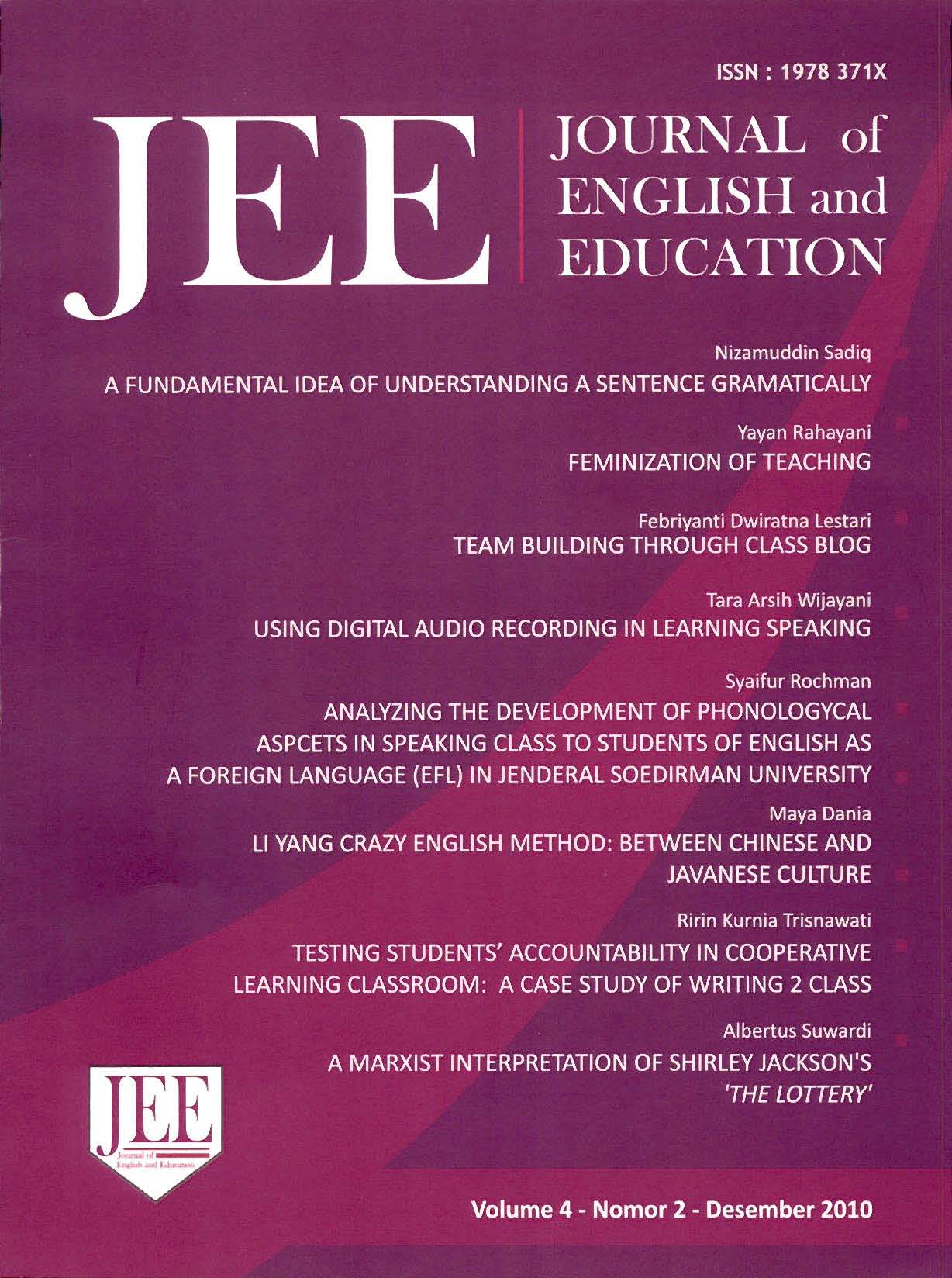Main Article Content
Abstract
Student's work for a writing class is no longer one submitted for limited readership the teacher and the writer himself as it can be publicly shared online. Posted on a webpage such as blog, it allows more people to access, read, or leave comments. Though it may sound intimidating for some shy students who are likely to keep their writing private, it is less about trespassing the confidential status of a student's work than building the student's self confidence and encouraging them to produce a better composition. It is especially through class blog which is managed by a number of students of the same class. This model proves to be beneficial for the students because not only is their writing read by more audience than their fellow classmates but they can also identify themselves as a team. This paper attempts to describe the previous researches concerning the application of blog in general and what it means by class blog, the model of class blog which has been implemented in this project, and how team work among the classmates is built through class blogs.
Keywords
Article Details
Copyright (c) 2016 JEE, Journal of English and Education

This work is licensed under a Creative Commons Attribution-ShareAlike 4.0 International License.
Authors who publish with this journal agree to the following terms:
- Authors retain copyright and grant the journal right of first publication with the work simultaneously licensed under a Creative Commons Attribution-ShareAlike 4.0 International License that allows others to share the work with an acknowledgment of the work's authorship and initial publication in this journal.
- Authors are able to enter into separate, additional contractual arrangements for the non-exclusive distribution of the journal's published version of the work (e.g., post it to an institutional repository or publish it in a book), with an acknowledgment of its initial publication in this journal.
- Authors are permitted and encouraged to post their work online (e.g., in institutional repositories or on their website) prior to and during the submission process, as it can lead to productive exchanges, as well as earlier and greater citation of published work (See The Effect of Open Access).

